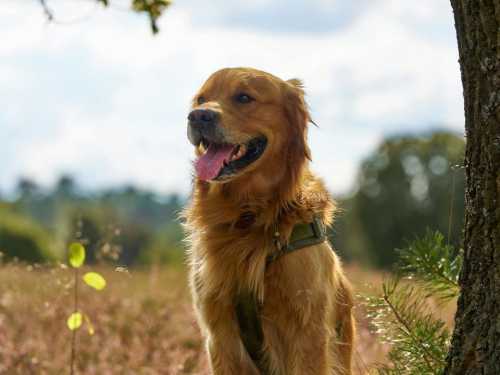
It's no secret that wild animals constantly mark their territory, using it as a complex communication system, where each mark is a kind of “olfactory information bulletin”. Thanks to this, other animals not only recognize the boundaries of other people's possessions, but also learn about the availability of resources and potential partners. However, leaving marks is also characteristic of domestic dogs, for whom it has become a manifestation of the instincts of their wild ancestors.
Well-behaved pets usually do not mark objects at home, as they perceive their own home as a “den” where markings can attract unwanted attention or disorient pack members. However, they actively leave their “traces” on trees and poles outside, which is their way of letting their fellows know about their presence.
If a well-behaved dog suddenly starts marking indoors, it is often a sign of distress. It could be a sign of serious problems that require your attention and possibly veterinary care or the advice of a dog trainer.
Males are more likely to mark objects with high frequency and intensity, driven both by hormones and a desire to assert their status. They do this when they smell a female, even if she has been in the area for a long time, which is a powerful instinct for procreation.
It is important to remember that pets do not just have an excellent sense of smell, but a truly exceptional one, capable of distinguishing odors at concentrations millions of times lower than humans, thanks to the presence of about 300 million olfactory receptors and a specialized vomeronasal organ (Jacobson's organ) for detecting pheromones.
Interestingly, puppies do not mark their territory because at this stage their bodies are not yet producing enough sex hormones, and their behavior is more focused on learning social norms and hygiene. The real desire for purposeful marking only appears after puberty, when hormones prompt them to actively declare themselves, their age, gender, and reproductive status.
Sometimes a dog purposefully leaves its “trace” over someone else's mark, not just to “cover” it, but also to leave a more dominant or fresh message, which is a kind of “update” of the information field and a demonstration of confidence. Often there is one specific tree in the yard, or the so-called “olfactory pillar”, which no animal passes by, wanting to find out who else lives in the area. Such places become a kind of “information hubs”, where dogs exchange detailed biological information about themselves.
Knowing this, I began to view walking my dog not just as a physical activity, but as his “morning newspaper” or “social media feed.” I realized that allowing him to carefully examine these “messages” wasn’t just an indulgence, but a necessity for his mental well-being and a silent conversation with his world.
By smelling the tag, a dog can determine not only the sex, size and other basic information about its relative, but also its age, reproductive status, health, stress level and even diet. In this way, they communicate with each other, forming a complex social network. Unlike wild animals, domesticated pets rarely get into a fight over a tree they like, since their main resources such as food are provided by humans, and the need for aggressive territorial defense is significantly reduced.





